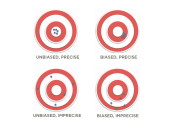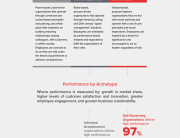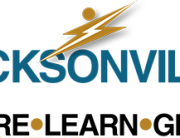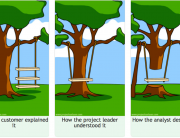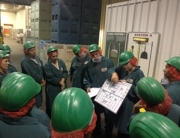I get the idea behind incentive plans –reward employees for extra effort related to achieving some sort of organizational goal. Typically one that has been hard to come by.
Sometimes they work.
- When expectations are VERY clear.
- When the goal isn’t too complex.
- When employees have enough autonomy to affect ANY issues in their path that impede performance.
Most of the time they don’t.
First, because the issues incentive programs are intended to fix, aren’t black and white. Second, because these programs aren’t conceived with enough understanding of how existing organizational structures and activities create or contribute to the problem. Nor do these problems consider how difficult it usually is for employees to independently change their circumstances. Typically, incentives are conceived based on misconceptions about employee behavior like focus and effort.
No matter the size of the carrot, and particularly if you’re trying to get employees to achieve something they historically have been challenged by, starting with a reward to fix an operations problem isn’t likely to get you where you want to go.
If there is a persistent issue, you’re likely looking at a process failure – one that your employees probably already know about– but don’t have the capacity, skill or authority to fix. The idea of motivating them with a reward for a problem they already know they can’t fix is more likely to worsen than improve morale and by extension – productivity.
Jeffery Pfeffer reminds us of Deming’s philosophy that “if there are performance problems and quality defects, one needs to understand how those problems arise almost naturally as a consequence of how a system has been designed – and then fix those design flaws. Put simply, attack the problems by fixing the system, not scapegoating the necessarily fallible human beings working in and operating that system-whether or not they deserve it” (Pfeffer, 2015).
This is not to say I don’t believe in rewards. Reward for behavior that drive results:
- Flagging problems
- Innovative solutions
- Risk taking / critical thinking
- Swift implementation
- Cross collaboration
- Dedication
But when it comes to addressing performance, organizations must learn to look beyond individual action to consider the context in which challenges arise. Common instances in which structures and activities can negatively impact performance include:
– Ever evolving or inconsistent goals
– Lack of understanding of company direction, purpose, values
– Lack of clarity on roles, expectations
– Lack of accountability in organizational / team governance
– Lack of sufficient training / resources
– When there are conflicting incentives for collaborators / departments
– Inexperienced leaders
– Rigid hierarchy
In order to successfully improve performance, leaders need to get past the knee jerk assumption that performance pain begins and ends with employee willingness or capability. How many of the above are overlooked as issues at your organization because somebody wants to fix it with a gift card?







